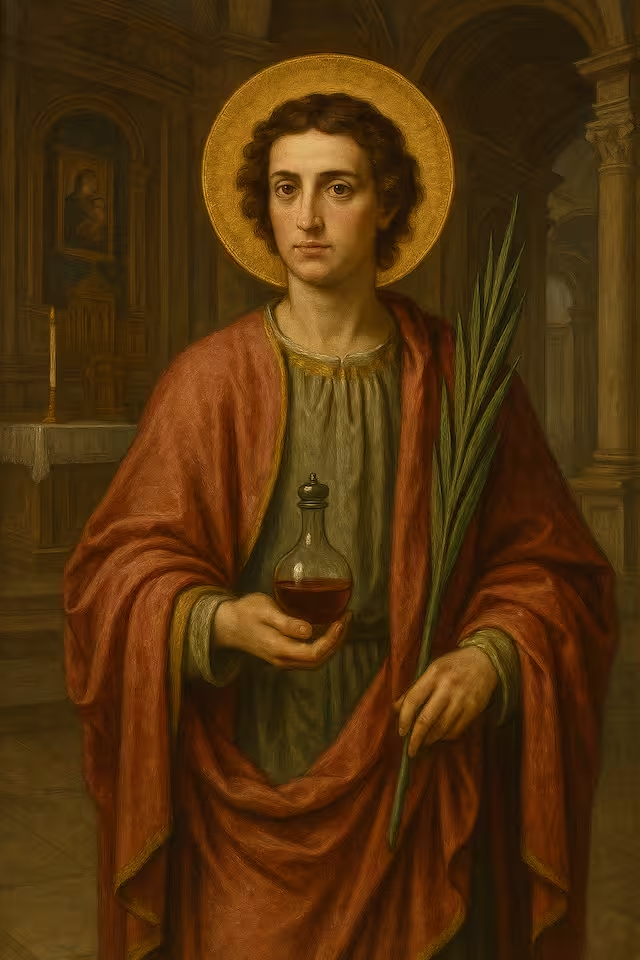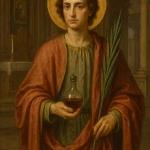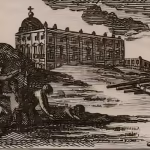Every July 27th, in a quiet corner of downtown Madrid, a phenomenon takes place that has puzzled both the faithful and the curious for centuries: a small vial containing what is considered the blood of Saint Pantaleon seems to inexplicably change from a solid (coagulated) to a liquid state. This phenomenon occurs at the Monastery of the Incarnation and, for generations, many have interpreted it as a miracle. At the same time, it has sparked the interest of scientists and heritage scholars.
Who was Saint Pantaleon?
Saint Pantaleon was, according to Christian tradition, a 4th-century physician and martyr from Nicomedia (present-day İzmit, Turkey). He was trained in medicine by his pagan father and later instructed in the Christian faith by a priest named Hermolaus. Pantaleon became a physician at the imperial court. He is credited with miraculous healings performed in the name of Christ, which aroused the envy of other doctors and led to his persecution. During Emperor Diocletian’s intense anti-Christian campaigns, he was arrested, tortured, and ultimately executed for refusing to renounce his faith.
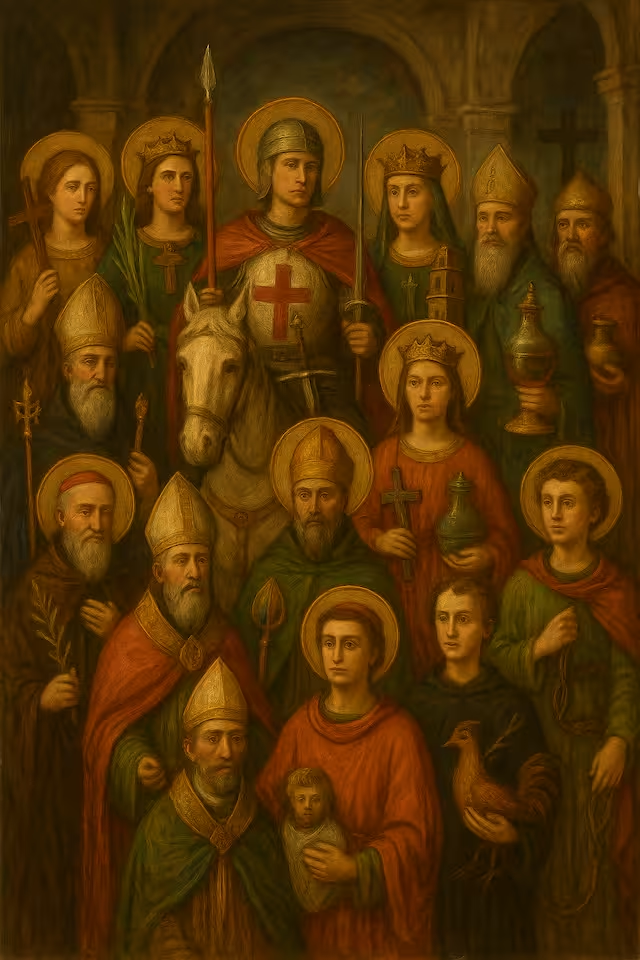
The Church venerates him as one of the Fourteen Holy Helpers, especially invoked by the sick and medical professionals. Over the centuries, his figure has been enriched with pious stories and miraculous deeds, becoming one of the most popular martyrs in both the East and West. Numerous relics attributed to him—mainly bone fragments and ampoules with his supposed blood—spread throughout Europe. One such ampoule is kept at the Royal Monastery of the Incarnation in Madrid, where it is the object of special veneration every year.
The Madrid Relic
The presence of this relic in the capital is linked to the origins of the Royal Monastery of the Incarnation. Between 1611 and 1616, during the early years of the convent, Doña Aldonza de Zúñiga, daughter of the Viceroy of Naples, Don Juan de Zúñiga, and the Countess of Miranda, professed as a novice there. As part of her religious dowry, she brought an ampoule that, according to tradition, contained the blood of the martyr Saint Pantaleon.
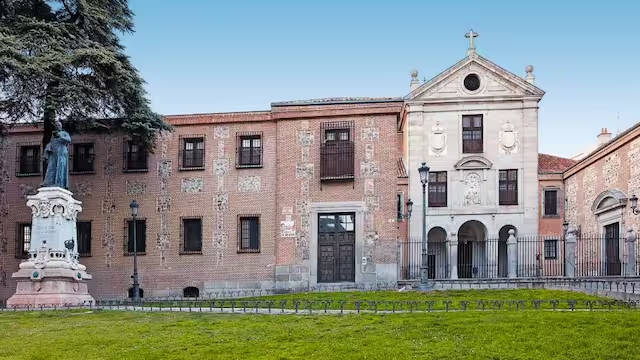
Source: Patrimonio Nacional
The most widespread version holds that the relic came from the cathedral of Ravello, on the Amalfi Coast, and was delivered to the Viceroy through mediation by Pope Paul V. However, no documents officially certify this donation. The ampoule was deposited in the Madrid convent, where it has been kept ever since.
Some later conventual sources mention Doña Aldonza as prioress, and it is believed that during her tenure, unusual phenomena associated with the blood began to be observed. However, detailed descriptions of those early manifestations are not preserved, leaving a margin of historical uncertainty.
Historical Confirmation of the Phenomenon
The phenomenon of the liquefaction of Saint Pantaleon’s blood is neither recent nor a product of imagination. Documented testimonies exist from over three centuries ago. Between 1724 and 1730, a group of thirteen doctors of Medicine and Theology observed the ampoule’s contents over several years and notarized that the substance became liquid every July 27th without human intervention. These documents show that the phenomenon was taken seriously and examined rigorously, even from a scientific perspective for the time.
Witnesses described how the content changed from a dry or solid state to liquid, changing color and becoming more transparent. They also noted that this change occurred repeatedly, always on the saint’s feast day. The observations were recorded in acts still preserved in monastery archives, although not widely known to the public.
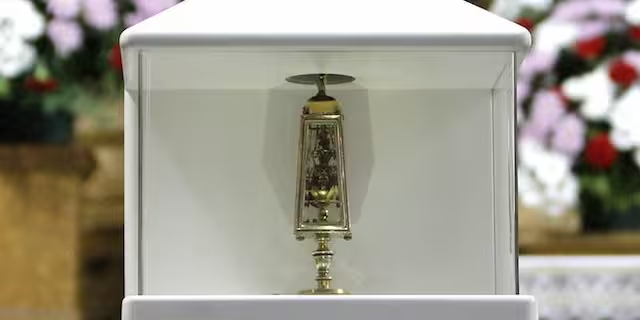
Source: Diocesan Archive of Madrid
Additionally, some religious chronicles and liturgical notes refer to the phenomenon, mentioning that the ampoule is publicly displayed and that, on many occasions, the state change can be seen with the naked eye. Although there are no written records for every year since then, the continuity of this tradition strengthens the idea that the phenomenon has persisted over time.
The fact that the relic is kept in a cloistered monastery—and not in a large tourist sanctuary—has helped maintain an atmosphere of quiet respect. The annual ceremony is held with sobriety, without spectacle, and continues to attract people seeking to understand this mystery from faith, history, or science.
The Liquefaction Phenomenon: Between Faith and Science
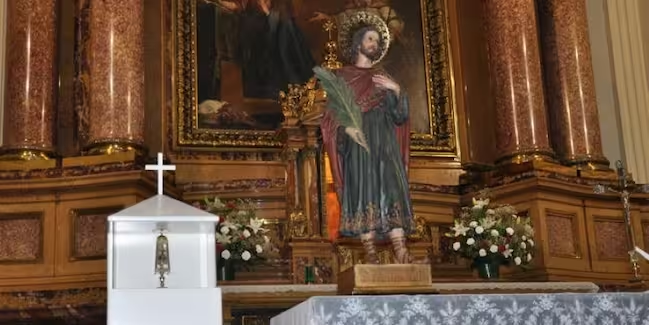
Source: Diocesan Archive of Madrid
Every year, on July 27th—the feast day of Saint Pantaleon—the ampoule containing his supposed blood is displayed publicly in the Royal Monastery of the Incarnation. According to numerous testimonies, the substance inside, usually coagulated, seems to liquefy spontaneously without any visible cause. Days later, it returns to its usual solid state. Occasionally, for conservation reasons or ecclesiastical decisions, this change is not shown live.
It has been observed that even days before July 27th, the content begins to become more reddish and transparent, and its volume may vary slightly, as if it “breathes.” This transformation culminates in the liquefaction, which often coincides with the saint’s feast day. Although the phenomenon does not occur absolutely predictably, it has happened frequently over centuries, keeping the attention of believers, curious visitors, and scholars alive.
Such manifestations are not exclusive to Madrid. Similar ampoules attributed to Saint Pantaleon are found in Ravello (Italy) and other European locations. A similar phenomenon occurs in Naples with the blood of Saint Januarius, which has been observed for centuries and forms part of the city’s devotional heritage. These cases belong to a Christian tradition in which the Church has exercised prudent discernment regarding extraordinary phenomena, avoiding rushed judgments and promoting respect both for faith and scientific inquiry.
From the Christian perspective, a miracle is a divine intervention that transcends natural laws. However, the Church approaches these events with rigor and calmness, recognizing their possible spiritual value without closing dialogue with science. In this specific case, no official judgment has been made about the nature of the phenomenon.
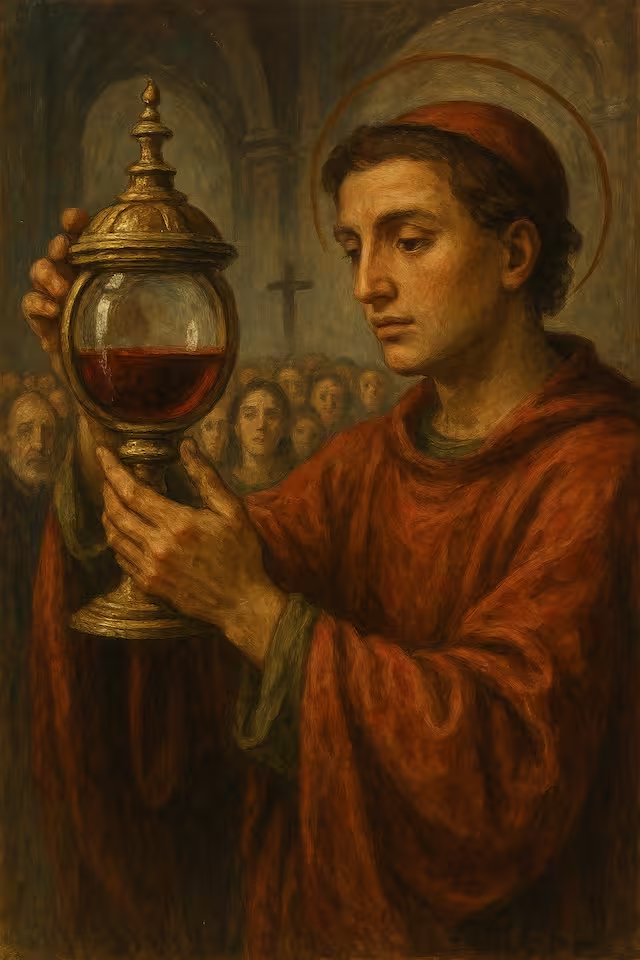
AI-generated image
From a scientific point of view, some hypotheses suggest that the substance inside the ampoule might have thixotropic properties, meaning its viscosity changes when shaken or subjected to slight temperature variations. Substances such as certain gels or non-Newtonian fluids exhibit similar behaviors. However, since it is a sacred relic, direct analyses have not been performed out of respect for its integrity, so scientific explanations are limited to external observation or laboratory recreations.
Whatever the cause, the liquefaction of Saint Pantaleon’s blood continues to challenge modern certainties and opens a space for dialogue between the visible and the invisible, between the measurable and the mysterious.
A Spiritual Sign and a Living Heritage
Today, the church of the Royal Monastery of the Incarnation displays the relic of Saint Pantaleon in the days around July 27th for public veneration. During these days, masses and moments of prayer are held in honor of the saint, inviting the faithful to contemplate not only the physical phenomenon of the liquefaction but also the testimony of faith of a martyr who, according to tradition, gave his life for Christ.
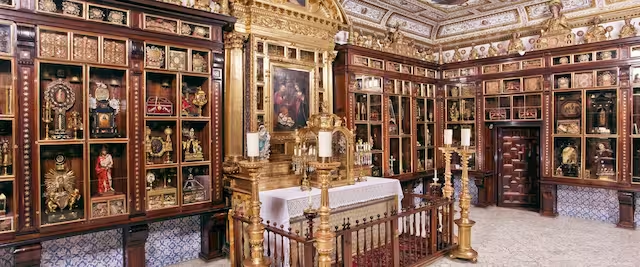
Source: Patrimonio Nacional
The liquefaction, beyond any natural or supernatural explanation, becomes an opportunity to renew hope, ask for the saint’s intercession—especially for the sick and suffering—and recognize God’s presence in both the simple and extraordinary.
This humble but meaningful gesture is part of Madrid’s spiritual and cultural heritage. Each year, it gathers devotees, visitors, and the curious, linking the city to a millennial tradition where history, faith, and mystery converge. The continuity of this practice—celebrated quietly and without ostentation—helps keep alive a shared memory that transcends generations.
When liquefaction occurs, many believers receive it as a sign of blessing, a sign of God’s closeness and the saint’s intercessory power. When it does not occur, some interpret it as an omen of difficult times. According to oral tradition—though without documentary proof—in particularly turbulent years, such as 1936 at the start of the Spanish Civil War, the phenomenon reportedly did not take place.
The blood of Saint Pantaleon is one of those enigmas that span centuries without being exhausted. Miracle, illusion, or yet unexplained physical phenomenon? Whatever the answer, its relevance within the history and spiritual identity of Madrid is unquestionable. Heritage is not limited to stones, altarpieces, or archives: it also consists of living traditions, devoted memory, and shared emotion, like the relic that every July continues silently gathering those who approach with faith, curiosity, or a desire to understand.
Bibliography and Sources
- Real González, Julio. “The Liquefaction of Saint Pantaleon’s Blood in the Monastery of the Incarnation.” Fotomadrid. Consulted at: https://www.fotomadrid.com/verArticulo/263.
- Diocesan Archive of Madrid. Official website. Historical and documentary information about parishes, monasteries, and relics in the diocese. Consulted at: https://archimadrid.es/archivo-diocesano
- Alfa y Omega. Madrid venerates once again the liquefied blood of Saint Pantaleon, Asian martyr of the 4th century. Published July 26, 2024. Consulted at: https://alfayomega.es/madrid-venera-un-ano-mas-la-sangre-licuada-de-san-pantaleon-martir-asiatico-del-siglo-iv
- The Mystery of the Blood of Saint Pantaleon: Between Faith and Science - 26 July, 2025
- History of the Palacio de El Pardo - 13 March, 2025
- Madrid, an Economic and Cultural Engine in Europe and Latin America - 11 March, 2025
